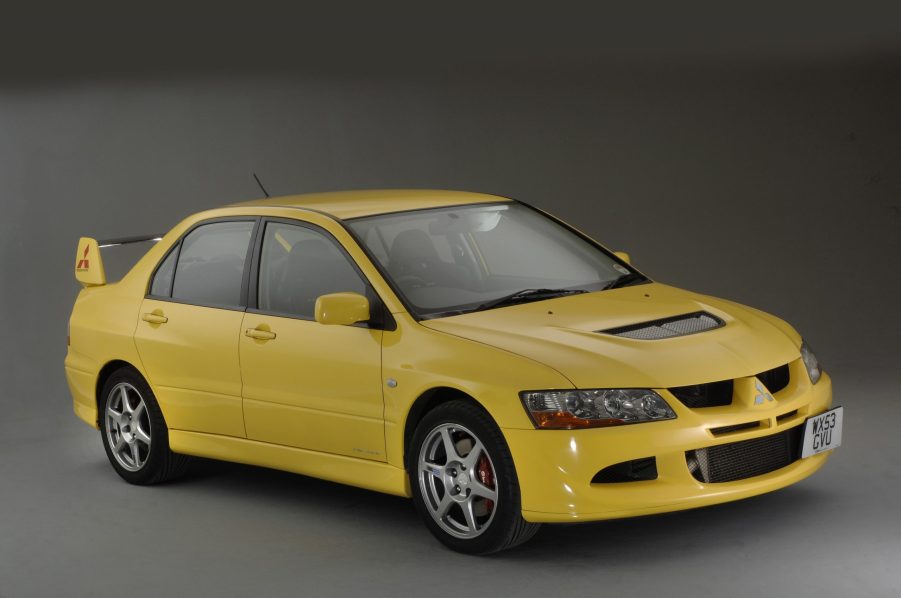
The Surprising Secret Shared Between the Mitsubishi Evo and the Dodge Journey
The legendary Mitsubishi Evo is a polarizing piece of automotive history. The car has its signature flaws, but its fans are devoted. What does this whippy sport sedan have in common with a bulky budget SUV? A lot more than meets the eye.
Mitsubishi changed the game with the Lancer Evolution

The first Mitsubishi Evolution hit the streets in 1992. Powered by a 2.0-L turbocharged 4-cylinder engine, the Evo was fast. This car was known for being a lightweight 303 hp lightning bolt. It was fun to drive and easy to push to its limits.
From 1996 to 1999, Evos won the World Rally Championship. American enthusiasts coveted the Evo, which was unavailable on the U.S. market until 2003. This is the same year the car was featured in ‘2 Fast 2 Furious’, solidifying its legendary status.
As the buyers that had idealized the Evo in the 1990s began to age out of the fast but stiff and brutal car, sales dropped. The market was adapting away from the speedy and immersive car. It was a race car, not a family sedan.
Diamond-Star Motors was a historic joint venture
Mitsubishi and Chrysler formed a business relationship in 1970, birthing Diamond-Star Motors. The two automakers co-developed the GS platform under this name. Four separate cr brands built models on this platform. Out of all of the vehicles that share it, no two are as different as the Mitsubishi Evolution and the Dodge Journey.
One is a budget SUV with a rental feel, and the other is a racing legend with incredible pickup. Despite being polar opposites, the two share the same GS platform. The Evo was compared to the STI with its communicative handling and top-notch all-wheel drive. Its platform sibling, the Dodge Journey, is the cheapest SUV on the market.
The Jeep Patriot and Compass are both built on the GS platform, the Dodge Avenger, a few Peugeots, and a few Citroens. Among all of these models, the Mitsubishi Evolution stands out from the crowd.
If the Mitsubishi Evo is fast and furious, the Dodge Journey is slow and complacent

Dodge ended production of the Journey in 2020 after the demand for the thrifty SUV dropped. The seven-passenger vehicle was woefully underpowered with a 172 hp 2.4-L 4-cylinder engine that Car and Driver called “antiquated.” The interior was lacking in upscale materials. It was criticized for feeling like cheap plastic.
What the Journey lacked in refinements, it made up for in practicality. The configurable interior was flexible for a variety of cargo. Second-row floor storage and a passenger seat storage bin gave the SUV plenty of places for gear. The 2020 Dodge Journey started at $25,170 and had two trim levels, the SE Value and the Crossroad.
The Dodge Journey felt like a glorified minivan to many drivers. Its cheap interior, unresponsive handling, and slow acceleration made it feel low quality. It’s as different from the spritely Evo as possible, but the two share so much in structure. This pairing of platform siblings is a striking reminder of just how far a design can be pushed.


